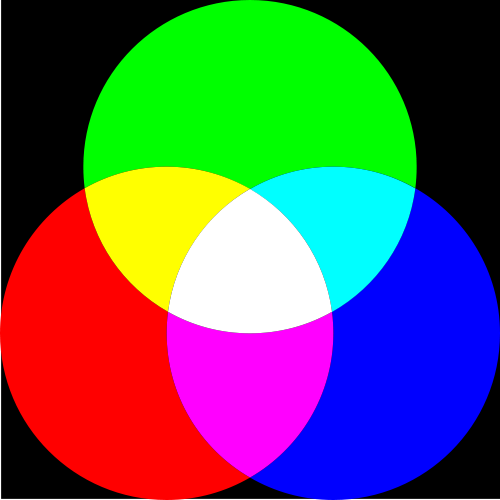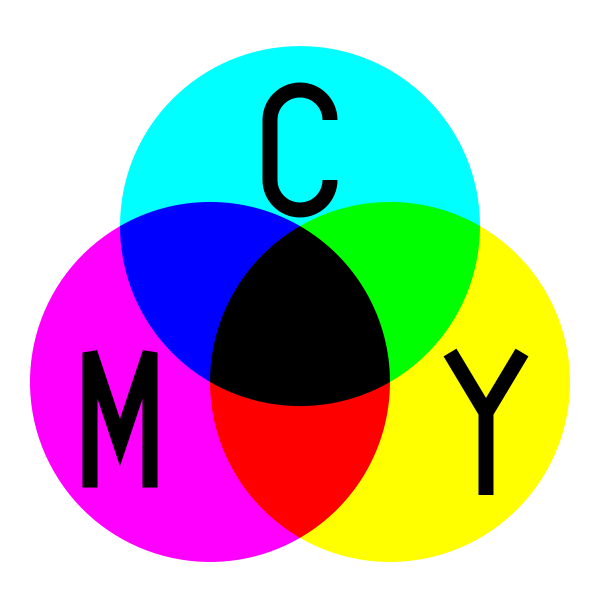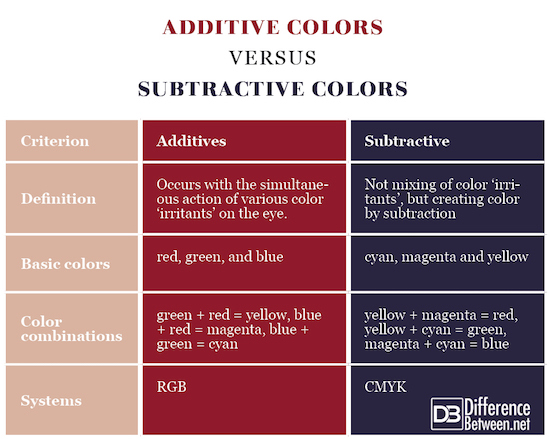Difference Between Additive Colors and Subtractive Colors
Color is the reaction of photosensitive lumps in our eye to the external stimulation in the form of light beams. When entering the eye, the ray is bent and disperses the spectrum. Color is the observation of a certain frequency range of 400-800 trillion Hz. Two basic ways of mixing colors are present: 1. Subtractive: mechanical stirring pigmentation mixing basic colors 2. Additive: optical mixing of light.

What is Additive color?
Adaptive synthesis is based on adding or adding individual wavelengths. This method is simpler to describe by adding three light beams, red, green, and blue. It is possible to achieve a wide range of different colors with different beam intensity ratios. This is possible because the maximum sensitivity of individual lumps to the human eye mesh partially coincides with the red, green, and blue part of the visible spectrum, and depending on the level of excitement of individual lumps the observer will experience a color. (For example, if only the solids sensitive to the blue part of the spectrum are excited, the brain of the observer interprets it as a blue color. To display colors on monitors, the RGB system (is, red-green-blue) is based on the principle of additive color mixing. This is about mixing the light of different wavelengths, not the mixing of pigments that reflects some parts of the spectrum, while others absorb. These colors are the basic colors for the additive system, each pixel is defined with 3 data that represent the value of these 3 basic colors. The monitors emit light and the colors on the monitor are obtained by additive color pixel combinations.

What is Subtractive color?
The subtractive synthesis is based on the absorption or subtraction of certain wavelengths from white light. Selective wavelength removal is performed using a filter. With the green filter we subtract the red, purple, subtract the green, and the yellow subtract the blue part of the spectrum. A wide degree of absorption of the individual wavelengths is possible to achieve a wide range of different colors. Of course, in this case, the color the observer feels depends on what has happened to his eye. If we use a filter that absorbs the green part of a visible spectrum of white light, the blue and red parts remain, which means that the eye of the observer will be excited by the susceptible particles on the blue and the reddish-sensitive red particles that will interpret the brain as a purple color. The pigment system is what we learned at school, at the hours of the artistic – that the blending of red and yellow gives orange, blue and red purple, and yellow and blue green, while blending these colors in even order gives black. Pigments do not emit light, but reflect, they accurately reflect the light of some wavelength. This is a subtractive system, i.e. a system of colors that arises by subtraction, and not by the addition of color. In fact, the basic colors in this system are magenta, yellow and cyan and their combination is black, but the print uses the CMYK system (cyan-magenta-yellow-key, where the “key” is black, how CMY would not need unnecessary consumption to create a black color).
Difference Between Additive and Subtractive colors
-
Definition of Additive and Subtractive Colors
Additive color mixing occurs with the simultaneous action of various color sensations – ‘irritants’ on the eye. It encounters wherever the different color values superimpose and as an optical impression interfere with each other. Subtractive (multiplicative) color mixing, contrary to the additive, is not mixing of color ‘irritants’, but creating color by subtraction. Namely, it is based on a change of light color when passing through or reflecting the light from the layers of dye or pigment.
-
Basic colors
Additive color synthesis occurs when three light zones are mixed optically (red, green, and blue). Subtractive synthesis occurs by mixing the basic material colors (cyan, magenta and yellow).
-
Color combinations in Additive and Subtractive Colors
Additive color synthesis: green + red = yellow, blue + red = magenta, blue + green = cyan. Subtractive mixing occurs: yellow + magenta = red, yellow + cyan = green, magenta + cyan = blue.
-
Systems involved in Additive and Subtractive Colors
RGB is a system of additive color synthesis. The color display is obtained by the different light intensity of the primary colors: red, green and blue. This system is used for works intended for monitor display. CMYK is a system of subtractive color synthesis. The color display is obtained by filtering out the primary light color from white complex light. The turquoise filter (Cyan) from white deprives red, purple (Magenta) green and yellow blue. Black is used to further dim the color. This system is used for works intended for printing.
Additive VS. Subtractive Colors : Comparison Chart

Summary of Additive verses Subtractive Colors
- Additive color synthesis occurs when three light zones (red, green, and blue) are mixed with optimum intensity and then white light is generated. Additive color synthesis: green + red = yellow, blue + red = magenta, blue + green = cyan.
- Subtractive synthesis occurs by mixing the basic material colors (cyan, magenta and yellow). If all three colors are mixed, a black color is created. They are mixed with: yellow + magenta = red, yellow + cyan = green, magenta + cyan = blue.
- Difference Between Thermodynamics and Kinetics - June 24, 2018
- Difference Between Welding and Soldering - June 24, 2018
- Difference Between Additive Colors and Subtractive Colors - June 20, 2018
Search DifferenceBetween.net :
Leave a Response
References :
[0]Image credit: https://upload.wikimedia.org/wikipedia/commons/thumb/2/2b/Additive_color.svg/500px-Additive_color.svg.png
[1]Image credit: https://upload.wikimedia.org/wikipedia/commons/thumb/1/19/SubtractiveColor.svg/600px-SubtractiveColor.svg.png
[2]Farris, S. “Color: Color theory, mixing and perception”, New York: White Word Publications, 2016
[3]Kuehni, R. G., Schwarz, A. “Color Ordered: A Survey of Color Systems from Antiquity to the Present”, Oxford: Oxford University, 2008
[4]Wyszecki G., Stiles, W. S. “Color Science: Concepts and Methods, Quantitative Data and Formulae, 2nd ed.”, New Jersey: Wiley Interscience, 1982
